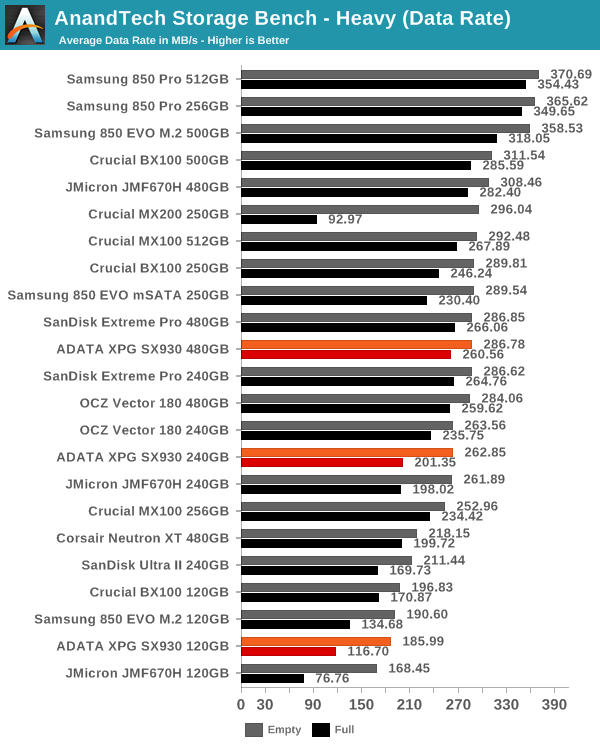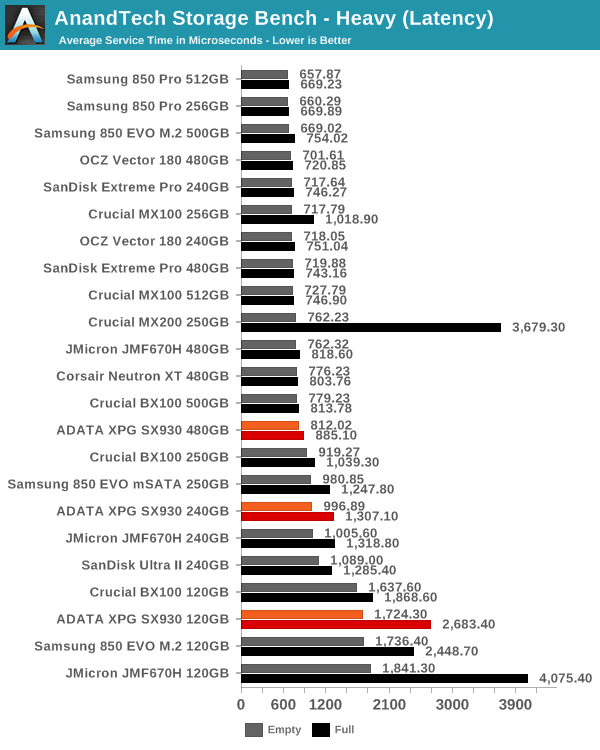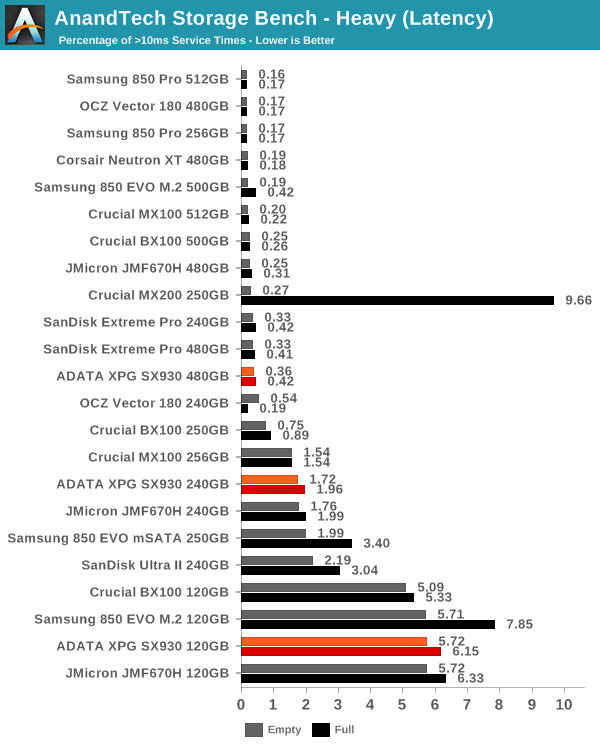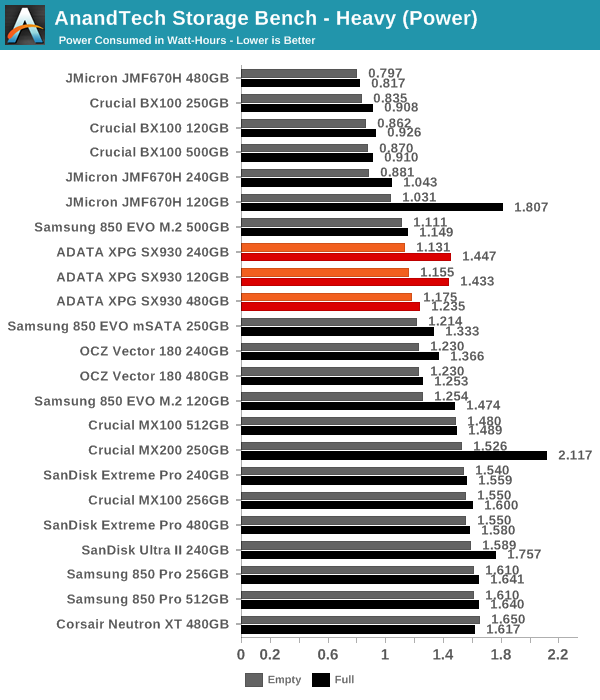ADATA XPG SX930 (120GB, 240GB & 480GB) SSD Review: JMicron JMF670H Debuts
by Kristian Vättö on July 16, 2015 10:00 AM ESTAnandTech Storage Bench - Heavy
While The Destroyer focuses on sustained and worst-case performance by hammering the drive with nearly 1TB worth of writes, the Heavy trace provides a more typical enthusiast and power user workload. By writing less to the drive, the Heavy trace doesn't drive the SSD into steady-state and thus the trace gives us a good idea of peak performance combined with some basic garbage collection routines. For full details of the test, please refer to the this article.

In our Heavy trace the SX930 is an average performer. To be frank, the JMF670H doesn't seem to have enough juice to go head to head with the 850 EVO and BX100, which is a shame because it leaves price as the only competitive advantage ADATA can have.

Surprisingly the 240GB model experiences more >10ms IOs in our Heavy trace than in The Destroyer. I would speculate this is due to the SLC cache filling up because the Heavy trace is more peak IO focused, whereas The Destroyer is built more for sustained performance, so it may be that in The Destroyer the controller just bypasses the SLC cache at some point and writes directly to MLC. In any case, optimizations are certainly needed to improve performance.

Power consumption, on the other hand, is relatively good. It's not BX100-level, but compared to some other high-end SSDs the SX930 has a more efficient power profile.











67 Comments
View All Comments
sonny73n - Thursday, July 16, 2015 - link
LOL @EVO 3-bit NAND...I just threw out my 1 year old 840EVO 250GB which was the worst SSD I've ever had. MX200 500GB is in and I wish I could've got this one from the begining instead of the EVO junk.
Stochastic - Thursday, July 16, 2015 - link
Just curious, what problems did you encounter?fokka - Thursday, July 16, 2015 - link
i guess the same as so many others, which still has no real fix: http://www.anandtech.com/show/8550/samsung-acknowl...Impulses - Thursday, July 16, 2015 - link
That's not about the 850.Adding-Color - Thursday, July 16, 2015 - link
What not about the 850? OP was talking about the 840!futrtrubl - Thursday, July 16, 2015 - link
Actually the OP was talking about something to challenge the EVO, the latest of which is the 850.Samus - Saturday, July 18, 2015 - link
What proof does anybody have the 850EVO is going to be any difference than the 840EVO with performance degradation. They use the same technology and only the 850PRO get's the binned, lower node 3D VNAND.voicequal - Monday, July 20, 2015 - link
The 840EVO was on ~19nm NAND. The 850EVO uses 40nm V-NAND which should provide much greater cell integrity needed for TLC operation.sonny73n - Friday, July 17, 2015 - link
What about the 850? After my experience with that "EVO", Samsung 3-bit TLC NAND in particular, I had lost interest and trust in Samsung. The 830 Pro 128GB I had years ago was excellent though but it took a chunk out of my pocket. So I guess when it comes to value for the money, I should always look somewhere else.bug77 - Friday, July 17, 2015 - link
Then you don't know that the 850 EVO has *nothing* to do with 840 EVO. Not surprising, otherwise you wouldn't have bought that PoS. The planar TLC is bottom of the barrel, with slow access and probably under 1000 P/E cycles. The 850 EVO uses 3D NAND which alleviates those issues.So you see, it really wasn't an 840 EVO problem, it was a planar TLC NAND problem. Many cheap drives still use that.